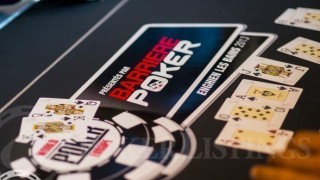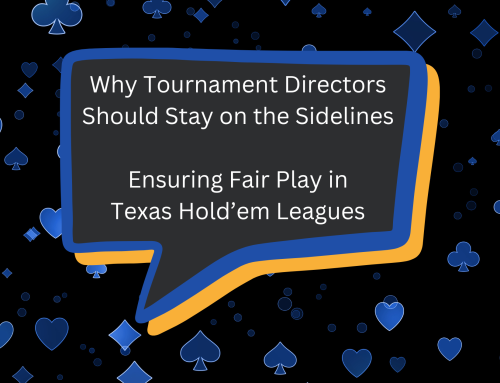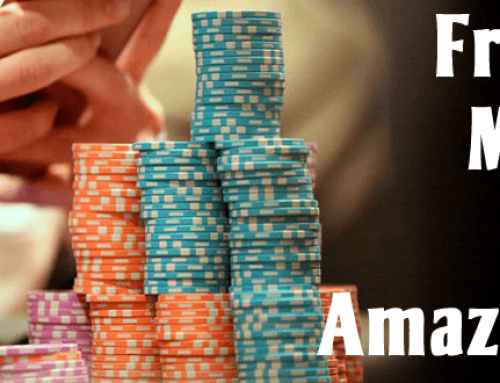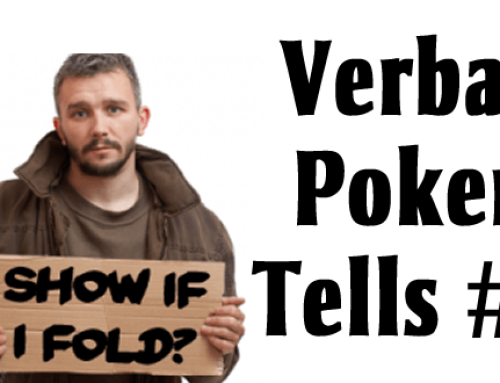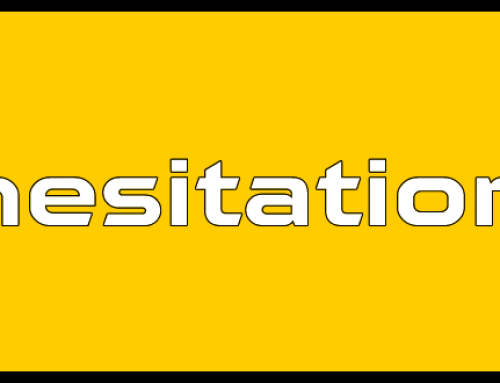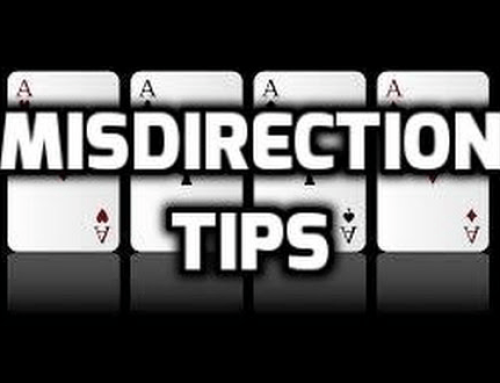A list of Long-Shot Odds in Texas Hold'em
Quads over quads? Set over set over set? Hitting the bad beat jackpot?
If you’ve played poker live or online for any stretch of time – even a very, very short amount of time – you’ve seen hands play out you never thought possible. Runner-runner flush draws. Runner-runner straight draws. One-outers on the river to crush your massive favorite. But how often do these “long-shots” really come in? And how often should we expect it?Below we’ve compiled a comprehensive list of unusual long-shot odds for Texas Hold’em poker – numbers and percentages to impress (or possibly annoy) your fellow players at the table.
And, importantly, to unmask ruthless exaggerators who claim the most unlikely things happened to them just the other day.
Odds of Aces vs Aces.
Let’s start with some rather simple but quite important odds: being dealt aces.
There are 1,326 different hole-card combinations in Texas Hold’em pokerand 6 of them are aces.
Thus the odds of being dealt aces in any hand are 6 to 1,320 or 1 to 221 (or 0.45%).
You probably already knew that. But what are the odds that one of your opponents is dealt aces as well?
At a full-ring table (for this article ‘full ring’ means 9 players per table) this should happen only once every 154 timesyou’re dealt aces.
A spectacular scenario, but quite unlikely.
The odds it happens in a $1m buy-in tournament?
Too painful to even calculate, but it happened to Connor Drinan in the 2014 WSOP Big One for One Drop.
Here’s the Aces-vs-Aces Hand with Drinan and Cary Katz:
Running into Aces with Kings
With aces you have nothing to fear before the flop. But with pocket kings there is always this nagging thought in the back of your head that maybe, just maybe, one of your opponents has aces.
Is that a likely scenario? The answer is, as it often is in poker, “it depends.”
If you’re playing heads-up you’re only up against one opponent. That opponent only has aces roughly once every 220 hands.
So, no. It’s not likely he has your kings beat.
But at a full-ring table (9 players) with 8 opponents, it’s suddenly much more likely – albeit still a long-shot – that someone has aces against your kings.
The odds for that to happen are 1 in 26. You’re almost always better off disregarding this worst-case scenario, but sometimes really good players can make impressive folds with kings before the flop.
Queens into Kings (and Aces)
With kings it’s possible, but unlikely, to run into a better hand pre-flop. But what about queens?
Queens are much more vulnerable and, while it’s still much more likely that you’re ahead pre-flop, you should consider the scenario that one of your opponents has kings or aces.
At a full-ring table the odds for that to happen are 1 in 13.
A raise, re-raise and an all-in in front of you might be a decent indicator that this 1 in 13 event is unfolding and that you’re better off folding your hand.
Important Odds for Big Pairs
| Scenario | Probability | Odds |
| Being dealt aces preflop | 0.4525% | 1:220 |
| If you have aces heads-up, your opponent has aces as well | 0.0816% | 1:1,224 |
| If you have aces at a full ring table, one opponent has aces as well | 0.6512% | 1:153 |
| If you have kings heads-up, your opponent has aces | 0.4898% | 1:203 |
| If you have kings at a full ring table, one opponent has aces | 3.8518% | 1:25 |
| If you have queens heads-up, your opponent has kings or aces | 0.9796% | 1:101 |
| If you have queens at a full ring table, at least one opponent has kings or aces | 7.5732% | 1:12 |
Set Over Set
Let’s move on to some post-flop odds — specifically sets, meaning trips with a pocket pair.
How often do you flop a set? Every ambitious poker player should know this number by heart: roughly 12%of the time or once every 9 times you see a flop with your pair.
Although quite unlikely this scenario is not that uncommon. If two players have pocket pairs, both will flop a set simultaneously roughly once every 100 flops.
You still need two players to have a pocket pair at the same time for that to happen. At a full-ring table you can expect to see a set-over-set scenario roughly once every 1,200 hands (assuming all players with pocket pairs always see a flop).
Heads-up this scenario is much more unlikely, though. It should happen only once every 42,000 hands. So there’s no need to worry about better sets with only one opponent – unless of course you’re Phil Ivey playing Scotty Nguyen in one of the biggest heads-up tournaments on TV:
Set Over Set Over Set
Set over set situations are already very uncommon. But what about some truly long-shot scenarios? What about three players all flopping a set at the same time?
The math shows this scenario is extremely unlikely. At a full-ring table you’ll only see that every 166k hands. With only three players at the table, this number increases to once every 14 million hands. A true long-shot!
Important Set Over Set Odds
| Scenario | Probability | Odds |
| If you have a pair, you hit a set (trips) on the flop | 11.7551% | 1:8 |
| Being dealt a pair and flopping a set | 0.6915% | 1:144 |
| If two players have pair, both flop a set | 1.0176% | 1:97 |
| Heads-up both players are dealt a pair and flop a set | 0.0024% | 1:42,305 |
| Two players at a 6-max-table are dealt a pair and both flop a set | 0.0355% | 1:2,819 |
| Two players at a full ring table are dealt a pair and both flop a set | 0.0851% | 1:1,174 |
| Three players at a 3-max-table are dealt and pair and all three flop a set | 0.0000% | 1:13,960,821 |
| Three players at a 6-max-table are dealt and pair and all three flop a set | 0.0001% | 1:698,040 |
| Three players at a full ring table are dealt and pair and all three flop a set | 0.0006% | 1:166,199 |
How Often Do You Hit Quads
While sets are great hands, let’s now look at even better poker hands: quads. Only bested by straight flushes, quads are the second-best possible holding in Texas Hold’em and occur only very infrequently.
How infrequently?
Well, if you hold a pocket pair and go all the way with it, you’ll hit a set by the river once every 123 attempts – infrequently, but still more likely than being dealt aces before the flop.
Quads over Quads: Does it happen?
Set over set is already quite unlikely but what about one step further? What are the odds of two players hitting quads when both start out with a pocket pair?
This scenario infamously happened to Andrew Robl and Toby Lewis during the Party Poker World Open some years ago:
Well, the odds for that are pretty slim: With two players holding a pocket pair both will hit quads by the river roughly once every 39,000 attempts.
Factoring in the odds of having two players being dealt pocket pairs before the flop, you’ll see such a scenario at a full-ring table only once every 313k hands – for most live poker players, this already is a once-in-a-lifetime scenario.
Odds for Making Quads in Poker
| Scenario | Probability | Odds |
| If you have a pair, you hit quads until the river | 0.8163% | 1:122 |
| If two players have a pair, both hit quads until the river | 0.0026% | 1:38,915 |
| Heads-up both players are dealt a pair and both hit quads | 0.00000008% | 1: 11,255,911 |
| Two players at a 6-max-table are dealt a pair and both hit quads | 0.0001% | 1:750,393 |
| Two players at a full ring table are dealt a pair and both hit quads | 0.0003% | 1:312,663 |
How Often Do You Flop a Flush
Let’s take a look at some more post-flop odds.
If you hold two suited cards, flopping three cards of your suit is your dream scenario. But usually this doesn’t happen.
Actually you’ll only flop a flush once every 119 attempts if you start with two suited cards.
How Likely is Flush Over Flush
Your dream scenario of flopping a flush can occasionally turn into a nightmare if one of your opponents flops a better flush with you.
WSOP Champion Joe McKeehen probably still has the occasional night terror from a flush-over-flush hand where he was on the receiving end of a bad beat against Fedor Holz during the WSOP $111k High Roller in 2016:
But what are the odds? As a matter of fact, if two players start out with two suited cards of the same suit, the odds of both flopping a flush are not as small as one might think.
Once every 206 attempts the flop will show three cards of the same suit. Even flush over flush over flush is not that unlikely.
If three players have suited cards of identical suits, they’ll all flop a flush once every 434 attempts.
If you want to know how often this happens at a table, you still have to factor in the odds of all those players being dealt matching suited cards.
Considering those odds (and assuming every player with suited cards sees the flop – admittedly a bold assumption) you’ll witness a flopped flush over flush once every 540 hands at a full ring table.
The triple flush is much more unlikely though and should happen only once every 29k attempts.
Odds for Flushes in Texas Hold’em
| Scenario | Probability | Odds |
| If you have suited cards, you flop a flush | 0.8418% | 1:118 |
| If two players have suited cards, both flop a flush | 0.4857% | 1:205 |
| If three players have suited cards, all three flop a flush | 0.2306% | 1:433 |
| Heads-Up, both players are dealt suited cards and flop a flush | 0.0051% | 1:19,490 |
| Two players at a 6-max-table are dealt suited cards and both flop a flush | 0.0770% | 1:1,298 |
| Two players at a full ring table are dealt suited cards and both flop a flush | 0.1847% | 1:540 |
| Three players at a 6-max-table are dealt suited cards and all three flop a flush | 0.0012% | 1:85,758 |
| Three players at a full ring table are dealt suited cards and all three flop a flush | 0.0035% | 1:28,585 |
Unlucky Streaks in Poker
Have you ever sat at a poker table for hours and not been dealt a single playable hand? Have you ever had someone claim he wasn’t dealt a single ace over dozens – or even hundreds! – of hands?
Let’s run some probabilities!
The probability of not being dealt a single pocket pair over 50 hands is a little bit under 5% – unlikely, but very possible. Expand the streak to 200 hands and the probability drops to less 0.0005%.
The guy to your right is claiming he hasn’t seen a pair over the last two days? He’s almost certainly bullshitting you.
Now most pocket pairs are only really good if you flop a set with them. Let’s take a look at some probabilities and assume you’ll always see a flop with your pocket pairs.
The probability of hitting at least one set (i.e. you’re dealt a pair and you flop a set with it) over 100 hands is almost exactly 50%. So over 100 hands you’re as likely to hit at least one set as you are to not hit one.
Over 500 hands the probability of not hitting a single set drops to only 3%. Over 1,000 hands this number drops to less than 0.1%. So, over a long enough sample, you’re practically guaranteed to flop one of those powerhouse hands.
Odds for Streaks in Poker
| Scenario | Probability | Odds |
| Being dealt no pocket pair over 50 hands | 4.8256% | 1:20 |
| Being dealt no pocket pair over 100 hands | 0.2329% | 1:428 |
| Being dealt no pocket pair over 200 hands | 0.0005% | 1:184,410 |
| Not hitting a set over 100 hands | 49.9635% | 1:1 |
| Not hitting a set over 500 hands | 3.1136% | 1:31 |
| Not hitting a set over 1000 hands | 0.0969% | 1:1,031 |
| Being dealt no ace and no pocket pair over one full ring orbit | 17.4226% | 1:5 |
| Being dealt no ace and no pocket pair over 25 hands | 0.7798% | 1:127 |
| Being dealt no premium hand (A-K, JJ+) over 100 hands | 4.6746% | 1:20 |
Probability of a Royal Flush
Let’s return to individual poker hands once more, namely to the single best poker hand — the royal flush. A hand so rare most poker players will remember every single one they are dealt for their entire life.
It’s already quite unlikely for the board to allow for a royal flush (by featuring at least three cards ten or higher of the same suit).
This happens only once every 60 hands that go to the river.
Let’s say you’re playing at a full-ring table where each player tries his or her best to hit a royal flush.
That means they never fold their hand until it’s impossible for them to make that royal flush.
Then you’ll see a royal flush roughly once every 3,600 hands. In real life the odds are certainly a bit lower since sometimes people fold hands like QTs before the flop.
Not everybody chases backdoor-royal-flush draws if there are bets and raises in front of them.
But let’s stay at this table where everyone does their best to make a royal flush. If you stood besides this table for 100 hands, the probability of witnessing at least one royal flush is already 2.7% – still unlikely, but not unheard of.
If you stood there for 2,500 hands (or roughly 100 hours of live poker) this probability increased to almost 50%. Here we can offer three royal flushes (and Phil Hellmuth winning one of them) in under 10 minutes:
All Important Royal Flush Probabilities
| Scenario | Probability | Odds |
| The board shows a royal flush | 0.0002% | 1:649,739 |
| The board allows for a royal flush | 1.6637% | 1:59 |
| One player makes a royal flush at a full ring table | 0.0276% | 1:3,628 |
| Witnessing a royal flush over 100 hands at a full ring table | 2.7184% | 1:36 |
| Witnessing a royal flush over 2500 hands at a full ring table | 49.7922% | 1:1 |
| Witnessing two or more royal flushes over 100 hands at a full ring table | 0.0369% | 1:2,708 |
Odds of Hitting the Bad Beat Jackpot?
Many local card rooms and some online poker sites offer bad beat jackpots. If you lose with a very strong hand, you and the entire table receive a share of a significant jackpot.
Sometimes those jackpots are worth more than $1m and some people become rich by losing a single hand of poker.
There’s one caveat though: hitting those bad beat jackpots is really, really unlikely.
Card rooms also have strict requirements about which hands qualify for a bad beat jackpot.
One of the most frequently used rule sets for those jackpots is: One player must lose with quad eights (or better) and both him and the player with the winning hand must use both hole cards.
Here’s a prime example of a hand that qualifies for such a bad beat jackpot:
Unfortunately for Motoyuki Mabuchi, who just lost with quad aces against a royal flush, this hand occurred during the WSOP which doesn’t offer bad beat jackpots.
Let’s talk numbers: If you’re playing heads up and both you and your opponent do the best to hit the bad beat jackpot (i.e. not folding pockets eights or better and not folding possible straight flushes), you’ll have a qualifying hand once every 7 million attempts. Talk about unlikely!
The odds improve considerably if you increase the number of players at the table since now more players can make a qualifying hand. At a full-ring table the odds of any two players hitting the bad beat jackpot are 1 to 194,000.
How Likely is a Bad Beat Jackpot in Poker?
| Scenario | Probability | Odds |
| Hitting quad eights or better and lose (heads-up) | 0.0000% | 1:6,974,878 |
| Hitting quad eights or better and lose (6-max) | 0.0002% | 1:464,991 |
| Hitting quad eights or better and lose (full ring) | 0.0005% | 1:193,746 |
| Witnessing such a bad beat over 1,000 hands at a full ring table | 0.5148% | 1:193 |
| Witnessing such a bad beat over 100,000 hands at a full ring table | 40.3180% | 1:1 |
Being Dealt the Same Hand Twice?
Now that we’ve covered most of the important long-shot odds, let’s look at some more streaks.
Have you had a déjà vu when looking at your hole cards because you had the exact same cards (down to the suits) just the last hand? Sounds like the dealer is pretty bad at shuffling, no?
The gist with small probabilities is that they quickly become more and more likely if you repeat the event often enough. Over 100 hands it’s already 1 to 13 to be dealt the same two cards in a row at least once. And over 1,000 hands it’s already more likely for this happen at least once than for this to not happen.
Pocket Aces Back-to-Back
Now anyone can be dealt 83o twice in row and might not even notice this coincidence (because, who cares about those low cards). But if you’ re dealt pocket aces back-to-back, you’ll probably remember this feat for months.
Surprisingly this scenario is not as unlikely as you might think. Over 100 hands the odds are roughly 1 to 500; over 1,000 hands already 1 to 50.Over 34,000 hands you’re 50/50 to have been dealt pocket aces twice in a row at least once.
Someone who has certainly played more than 34,000 hands is Phil Hellmuth. And the Poker Brat just recently managed to get dealt pocket aces back-to-back live on television during Poker Night in America.
But, of course, getting aces is not everything. You first need to get your stack in and you need your hand to hold up.
Probabilities of Back-to-Back Hands and Streaks in Hold’em
| Scenario | Probability | Odds |
| Being dealt the exact same cards in a row at least once over 100 hands | 7.1968% | 1:13 |
| Being dealt the exact same cards in a row at least once over 1,000 hands | 52.9368% | 1:1 |
| Being dealt pocket aces twice in a row at least once over 100 hands | 0.2016% | 1:495 |
| Being dealt pocket aces twice in a row at least once over 1,000 hands | 2.0157% | 1:49 |
| Being dealt pocket aces twice in a row at least once over 34,000 hands | 49.9927% | 1:1 |
| Being dealt pocket aces twice within one full ring orbit | 0.0722% | 1:1,385 |
| Being dealt pocket aces three times within one full ring orbit | 0.0008% | 1:131,144 |
| Being dealt pocket kings or better twice within one full ring orbit | 0.2826% | 1:353 |
| Being dealt a premium hand (A-K, JJ+) twice within one full ring orbit | 2.8448% | 1:34 |
| Being dealt a premium hand (A-K, JJ+) 10 or more times over 100 hands | 0.0911% | 1:1,097 |
| Hitting at least 5 sets over 100 hands | 0.0690% | 1:1,447 |
How Many Ways to Shuffle the Deck
Lastly, let’s take a look at some rather big numbers: How many ways are there to shuffle a deck of 52 cards?
For the first card you have 52 options, for the second 51, for the third 50 and so on. Thus the total number of different ways a deck can be shuffled is 52 × 51 × 50 × … × 1 – or 52! (factorial).
This number is mindbogglingly huge.
It has 68 digits and if you like tongue twisters, please try to pronounce it: 80 unvigintillion 658 vigintillion 175 novemdecillion 170 octodecillion 943 septendecillion 900 sexdecillion.
Here’s the full number:
80,658,175,170,943,900,000,000,000,000,000,000,000,000,000,000,000,000,000,000,000,000,000
The number of ways to shuffle a single deck of cards is so huge that whenever you shuffle a deck you are virtually guaranteed to have a shuffle that has never been played before and never will be played again.
YouTuber Vsauce produced a great video which demonstrates how absurdly huge the number of ways to shuffle a deck actually is:
Number of Possible Different Poker Games
Interestingly enough, the number of different card distributions for poker games is much smaller.
The bottom cards of the deck are not used and thus it doesn’t matter how they are shuffled. As a matter of fact, for a heads-up game of Hold‘em, you only use 9 cards – 4 hole cards and 5 for the board.
The total number of different distributions for a heads-up Hold’em game is a bit over 1 trillion: 1,390,690,501,200 – a number much smaller than 52!, but still large enough that you’ll never see the same heads-up game twice in your lifetime.
Possible Distributions for Texas Hold’em Games
| Number of different heads-up deals | 1,390,690,501,200 | |
| Number of different 6-max deals | 1,411,633,731,355,660,000,000 | |
| Number of different full ring deals | 874,314,668,608,292,000,000,000,000 | |
| Number of ways to shuffle the deck | 806,581,751,709,439 * 10^53 | |
All Long-Shot Odds in Poker
Below we’ve listed all odds and probabilities mentioned in this article. Below each scenario we have provided the mathematical formula for how to calculate the probability. Keep in mind that all probabilities assume that each player stays in the hand until the mentioned scenario can no longer be reached. For example, the probabilities for sets assume that no player ever folds pocket pairs.
| # | Scenario | Probability | Odds |
| 1 | Being dealt aces preflop | 0.4525% | 1:220 |
| 6/52c2 | |||
| 2 | If you have aces heads-up, your opponent has aces as well | 0.0816% | 1:1,224 |
| 1/50c2 | |||
| 3 | If you have aces at a full ring table, one opponent has aces as well | 0.6512% | 1:153 |
| 1 – ( (50c2 – 1) / 50c2 )^8 | |||
| 4 | If you have kings heads-up, your opponent has aces | 0.4898% | 1:203 |
| 6/50c2 | |||
| 5 | If you have kings at a full ring table, one opponent has aces | 3.8518% | 1:25 |
| 1 – ( (50c2 – 6) / 50c2 )^8 | |||
| 6 | If you have queens heads-up, your opponent has kings or aces | 0.9796% | 1:101 |
| 12/50c2 | |||
| 7 | If you have queens at a full ring table, at least one opponent has kings or aces | 7.5732% | 1:12 |
| 1 – ( (50c2 – 12) / 50c2 )^8 | |||
| 8 | If you have a pair, you hit a set (trips) on the flop | 11.7551% | 1:8 |
| 1 – 48c3 / 50c3 | |||
| 9 | Being dealt a pair and flopping a set | 0.6915% | 1:144 |
| 13 * 6 / 52c2 * (1 – 48c3 / 50c3) | |||
| 10 | If two players have pair, both flop a set | 1.0176% | 1:97 |
| 2 * 2 * 46 / 48c3 | |||
| 11 | Heads-up both players are dealt a pair and flop a set | 0.0024% | 1:42,305 |
| 13c3 * 4^3 / 52c3 * 9 / 49c2 * 6/47c2 | |||
| 12 | Two players at a 6-max-table are dealt a pair and both flop a set | 0.0355% | 1:2,819 |
| 13c3 * 4^3 / 52c3 * 6c2 * 9 / 49c2 * 6/47c2 | |||
| 13 | Two players at a full ring table are dealt a pair and both flop a set | 0.0851% | 1:1,174 |
| 13c3 * 4^3 / 52c3 * 9c2 * 9 / 49c2 * 6/47c2 | |||
| 14 | Three players at a 3-max-table are dealt and pair and all three flop a set | 0.0000% | 1:13,960,821 |
| 13c3 * 4^3 / 52c3 * 9 / 49c2 * 6 / 47c2 * 3 / 45c2 | |||
| 15 | Three players at a 6-max-table are dealt and pair and all three flop a set | 0.0001% | 1:698,040 |
| 13c3 * 4^3 / 52c3 * 6c3 * 9 / 49c2 * 6 / 47c2 * 3 / 45c2 | |||
| 16 | Three players at a full ring table are dealt and pair and all three flop a set | 0.0006% | 1:166,199 |
| 13c3 * 4^3 / 52c3 * 9c3 * 9 / 49c2 * 6 / 47c2 * 3 / 45c2 | |||
| 17 | If you have a pair, you hit quads until the river | 0.8163% | 1:122 |
| 48c3 / 50c5 | |||
| 18 | If two players have a pair, both hit quads until the river | 0.0026% | 1:38,915 |
| 44 / 48c5 | |||
| 19 | Heads-up both players are dealt a pair and both hit quads | 0.00000008% | 1: 11,255,911 |
| 13c2 * ( 4c2)^2 * 44 / 52c5 * 2 / 47c2 * 1 / 45c2 | |||
| 20 | Two players at a 6-max-table are dealt a pair and both hit quads | 0.0001% | 1:750,393 |
| 13c2 * ( 4c2)^2 * 44 / 52c5 * 6c2 * 2 / 47c2 * 1 / 45c2 | |||
| 21 | Two players at a full ring table are dealt a pair and both hit quads | 0.0003% | 1:312,663 |
| 13c2 * ( 4c2)^2 * 44 / 52c5 * 9c2 * 2 / 47c2 * 1 / 45c2 | |||
| 22 | If you have suited cards, you flop a flush | 0.8418% | 1:118 |
| 11c3 / 50c3 | |||
| 23 | If two players have suited cards, both flop a flush | 0.4857% | 1:205 |
| 9c3 / 48c3 | |||
| 24 | If three players have suited cards, all three flop a flush | 0.2306% | 1:433 |
| 7c3 / 46c3 | |||
| 25 | Heads-Up, both players are dealt suited cards and flop a flush | 0.0051% | 1:19,490 |
| 13c3 * 4 / 52c3 * 10c2 / 49c2 * 8c2 / 47c2 | |||
| 26 | Two players at a 6-max-table are dealt suited cards and both flop a flush | 0.0770% | 1:1,298 |
| 13c3 * 4 / 52c3 * 6c2 * 10c2 / 49c2 * 8c2 / 47c2 | |||
| 27 | Two players at a full ring table are dealt suited cards and both flop a flush | 0.1847% | 1:540 |
| 13c3 * 4 / 52c3 * 9c2 * 10c2 / 49c2 * 8c2 / 47c2 | |||
| 28 | Three players at a 6-max-table are dealt suited cards and all three flop a flush | 0.0012% | 1:85,758 |
| 13c3 * 4 / 52c3 * 6c2 * 10c2 / 49c2 * 8c2 / 47c2 * 6c2 / 45c2 | |||
| 29 | Three players at a full ring table are dealt suited cards and all three flop a flush | 0.0035% | 1:28,585 |
| 13c3 * 4 / 52c3 * 9c2 * 10c2 / 49c2 * 8c2 / 47c2 * 6c2 / 45c2 | |||
| 30 | Being dealt no pocket pair over 50 hands | 4.8256% | 1:20 |
| ( 1 – ( 13 * 6 ) / 52c2 )^50 | |||
| 31 | Being dealt no pocket pair over 100 hands | 0.2329% | 1:428 |
| ( 1 – ( 13 * 6 ) / 52c2 )^100 | |||
| 32 | Being dealt no pocket pair over 200 hands | 0.0005% | 1:184,410 |
| ( 1 – ( 13 * 6 ) / 52c2 )^200 | |||
| 33 | Not hitting a set over 100 hands | 49.9635% | 1:1 |
| ( 1 – 13 * 6 / 52c2 * (1 – 48c3 / 50c3) )^100 | |||
| 34 | Not hitting a set over 500 hands | 3.1136% | 1:31 |
| ( 1 – 13 * 6 / 52c2 * (1 – 48c3 / 50c3) )^500 | |||
| 35 | Not hitting a set over 1000 hands | 0.0969% | 1:1,031 |
| ( 1 – 13 * 6 / 52c2 * (1 – 48c3 / 50c3) )^1000 | |||
| 36 | Being dealt no ace and no pocket pair over one full ring orbit | 17.4226% | 1:5 |
| ((1326 – 13 * 6 – 13 * 16)/1326)^9 | |||
| 37 | Being dealt no ace and no pocket pair over 25 hands | 0.7798% | 1:127 |
| ((1326 – 13 * 6 – 13 * 16)/1326)^25 | |||
| 38 | Being dealt no premium hand (A-K, JJ+) over 100 hands | 4.6746% | 1:20 |
| ((1326 – 3 * 6 – 16)/1326)^100 | |||
| 39 | The board shows a royal flush | 0.0002% | 1:649,739 |
| 4 / 52c5 | |||
| 40 | The board allows for a royal flush | 1.6637% | 1:59 |
| 5c3 * 47c2 * 4 / 52c5 | |||
| 41 | One player makes a royal flush at a full ring table | 0.0276% | 1:3,628 |
| 4 / 52c5 + 5 * 4 * 47 / 52c5 * 9 * 45 / 47c2 + 5c3 * 47c2 * 4 / 52c5 * 9 * 1 / 47c2 | |||
| 42 | Witnessing a royal flush over 100 hands at a full ring table | 2.7184% | 1:36 |
| 1 – ( 1- prob. Above)^100 | |||
| 43 | Witnessing a royal flush over 2500 hands at a full ring table | 49.7922% | 1:1 |
| 1 – ( 1- prob. Above)^2500 | |||
| 44 | Witnessing two or more royal flushes over 100 hands at a full ring table | 0.0369% | 1:2,708 |
| 1 – BinomDist(1;100;prob. Above) | |||
| 45 | Hitting quad eights or better and lose (heads-up) | 0.0000% | 1:6,974,878 |
| 46 | Hitting quad eights or better and lose (6-max) | 0.0002% | 1:464,991 |
| 47 | Hitting quad eights or better and lose (full ring) | 0.0005% | 1:193,746 |
| 48 | Witnessing such a bad beat over 1,000 hands at a full ring table | 0.5148% | 1:193 |
| 1 – ( 1- prob. Above)^1000 | |||
| 49 | Witnessing such a bad beat over 100,000 hands at a full ring table | 40.3180% | 1:1 |
| 1 – ( 1- prob. Above)^100000 | |||
| 50 | Being dealt the exact same cards in a row at least once over 100 hands | 7.1968% | 1:13 |
| 1 – (1325 / 52c2)^(100-1) | |||
| 51 | Being dealt the exact same cards in a row at least once over 1,000 hands | 52.9368% | 1:1 |
| 1 – (1325 / 52c2)^(1000-1) | |||
| 52 | Being dealt pocket aces twice in a row at least once over 100 hands | 0.2016% | 1:495 |
| 53 | Being dealt pocket aces twice in a row at least once over 1,000 hands | 2.0157% | 1:49 |
| 54 | Being dealt pocket aces twice in a row at least once over 34,000 hands | 49.9927% | 1:1 |
| 55 | Being dealt pocket aces twice within one full ring orbit | 0.0722% | 1:1,385 |
| BinomDist(7;9;(1326 – 6) / 1326;1) | |||
| 56 | Being dealt pocket aces three times within one full ring orbit | 0.0008% | 1:131,144 |
| BinomDist(6;9;(1326 – 6) / 1326;1) | |||
| 57 | Being dealt pocket kings or better twice within one full ring orbit | 0.2826% | 1:353 |
| BinomDist(7;9;(1326 – 2 * 6) / 1326;1) | |||
| 58 | Being dealt a premium hand (A-K, JJ+) twice within one full ring orbit | 2.8448% | 1:34 |
| BinomDist(7;9;(1326 – 4 * 6-16) / 1326;1) | |||
| 59 | Being dealt a premium hand (A-K, JJ+) 10 or more times over 100 hands | 0.0911% | 1:1,097 |
| BinomDist(90;100;(1326 – 4 * 6-16) / 1326;1) | |||
| 60 | Hitting at least 5 sets over 100 hands | 0.0690% | 1:1,447 |
| BinomDist(95;100;1 – 13 * 6 / 52c2 * (1 – 48c3 / 50c3);1) | |||
| 61 | Number of different heads-up deals | 1,390,690,501,200 | |
| 52c5 * 47c4 * 3 * 1 | |||
| 62 | Number of different 6-max deals | 1,411,633,731,355,660,000,000 | |
| 52c5 * 47c12 * 11 * 9 * 7 * 5 * 3 * 1 | |||
| 63 | Number of different full ring deals | 874,314,668,608,292,000,000,000,000 | |
| 52c5 * 47c20 * 17 * 15 * 13 * 11 * 9 * 7 * 5 * 3 * 1 | |||
| 64 | Number of ways to shuffle the deck | 806,581,751,709,439 * 10^53 | |
| 52! | |||
XcY is the Binomial Coefficient (X choose Y), e.g. 52c2 = 52! / ( 2! * (52 – 2)! )
src: pokerlistings.com


